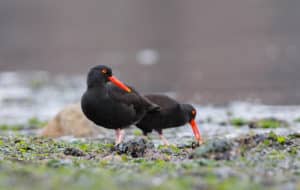Marine Reserves
Both ecologically important and stunningly beautiful, Oregon’s five marine reserves are vital to the health of our coastal habitat, benefitting seabirds, fish, marine mammals, and all coastal life above and below the surface. These underwater wilderness areas conserve habitats and biodiversity, act as a buffer from human-caused impacts, and serve as “living laboratories” for scientific research. We will need your support to ensure Oregon’s fledgling marine reserves are ecologically viable and to ensure they continue to exist beyond 2023 when they will be evaluated by the state legislature.
About the Marine Reserves
In 2012 Oregon created five marine reserves and nine marine protected areas, covering approximately 9 percent of state waters. A marine reserve is an “underwater wilderness area” within which the removal of all marine life as well as ocean development are prohibited. Marine protected areas are like marine reserves but there is some allowance for extractive uses. By having these safe havens within our state waters, we ensure protection of Oregon’s rich productive marine ecosystems that inspire wonder, help provide resiliency in a changing climate, and sustain economies for generations to come.
Bird Alliance of Oregon was part of a coalition that engaged in a decade-long campaign to advocate for the establishment of Oregon’s marine reserves. Currently, Bird Alliance of Oregon is a member of the Oregon Marine Reserves Partnership, which works to ensure the successful implementation of Oregon’s marine reserves by building community awareness and engagement, supporting agency and academic research and compliance efforts, and influencing decision makers.
What does the science say?
A comprehensive review of 124 marine reserves around the world found significant increases in species diversity, body size, density, and biomass compared to nearby unprotected areas. Marine reserves sometimes provide a “spillover effect” where movement of fish out of a reserve can replenish commercial fisheries nearby.
Support for a More Robust Marine Reserve Network
In 2008, a panel of experts advised Oregon’s Ocean Policy Advisory Council that an ecologically functional reserve should be 5-10km in size (alongshore distance) and no more than 50-100km apart. Both the Redfish Rocks and Otter Rock reserves are smaller than the recommended size and the distance between the Cape Perpetua and Redfish Rocks reserves is much more than 100km. In order for a functional network of reserves, additional sites should be considered.
The Oregon Department of Fish and Wildlife Marine Reserve Program is conducting both ecological and socio-economic (human dimensions) monitoring of the reserves. In 2023 the Oregon legislature will evaluate their findings and decide on next steps for Oregon’s Marine Reserves. ODFW concedes that it will take data collection beyond the 2023 evaluation before robust “reserve effects” can be documented. In general, preliminary results indicate:
- Overwhelming public support for marine reserves (including on the coast)
- No significant economic impacts from marine reserve restriction on commercial or recreational fishing.

What’s Next?
In 2023 the Oregon legislature will decide on next steps for the marine reserve program. Bird Alliance of Oregon will continue to support marine reserves, thwart potential efforts to de-fund them, and support science for ensuring a functional network of marine reserves.
How You Can Help
- Stay tuned for action alerts for public comment. As we get closer to the 2023 evaluation there will be increasing opportunities.
- Get involved in one of our coastal community science projects
- Visit a marine reserve and help increase awareness about their value
- Write a legislator to express your support for Oregon’s marine reserves.
- If you own a coastal business, ask us about the marine reserve business packet









